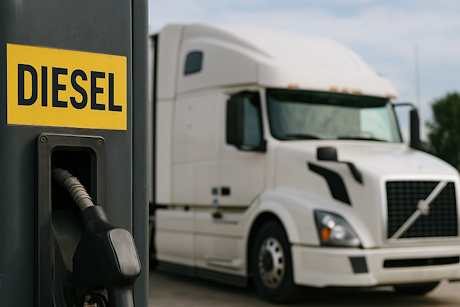Full News
Rising Diesel Prices Challenge U.S. Trucking Industry
Sep 11, 2025
Administrator

truckdrivers.biz
In September 2025, diesel prices across the United States continue to rise, adding pressure on trucking companies and independent drivers. The U.S. Energy Information Administration reports the national average has climbed for the fourth week in a row, reaching its highest point since early 2023.
Large fleets manage to offset expenses through fuel surcharges, passing some costs to shippers. However, small carriers and owner-operators are hit hardest, with fuel now taking up to 40% of operating budgets. Combined with high insurance premiums and costly repairs, many report shrinking profit margins.
The market adds complexity: reefer demand remains stable thanks to food and pharmaceuticals, while dry van and flatbed carriers face weaker freight volumes. This imbalance forces drivers to compete for loads, often accepting lower rates.
To adapt, carriers are turning to route optimization software, telematics, and fuel-efficient driving practices. Some explore alternatives like natural gas or electric trucks, but adoption is limited by high costs and lack of infrastructure.
Industry groups, including the American Trucking Associations, are urging policymakers to consider measures that could stabilize the fuel market or provide relief for small operators. Without support, many fear continued price hikes will push independents out, accelerating consolidation in the sector.
Despite challenges, analysts remain optimistic: freight demand in the U.S. is expected to stay strong. Experts believe companies that adapt quickly and embrace efficiency will survive the current storm and remain competitive once the market stabilizes.
Large fleets manage to offset expenses through fuel surcharges, passing some costs to shippers. However, small carriers and owner-operators are hit hardest, with fuel now taking up to 40% of operating budgets. Combined with high insurance premiums and costly repairs, many report shrinking profit margins.
The market adds complexity: reefer demand remains stable thanks to food and pharmaceuticals, while dry van and flatbed carriers face weaker freight volumes. This imbalance forces drivers to compete for loads, often accepting lower rates.
To adapt, carriers are turning to route optimization software, telematics, and fuel-efficient driving practices. Some explore alternatives like natural gas or electric trucks, but adoption is limited by high costs and lack of infrastructure.
Industry groups, including the American Trucking Associations, are urging policymakers to consider measures that could stabilize the fuel market or provide relief for small operators. Without support, many fear continued price hikes will push independents out, accelerating consolidation in the sector.
Despite challenges, analysts remain optimistic: freight demand in the U.S. is expected to stay strong. Experts believe companies that adapt quickly and embrace efficiency will survive the current storm and remain competitive once the market stabilizes.